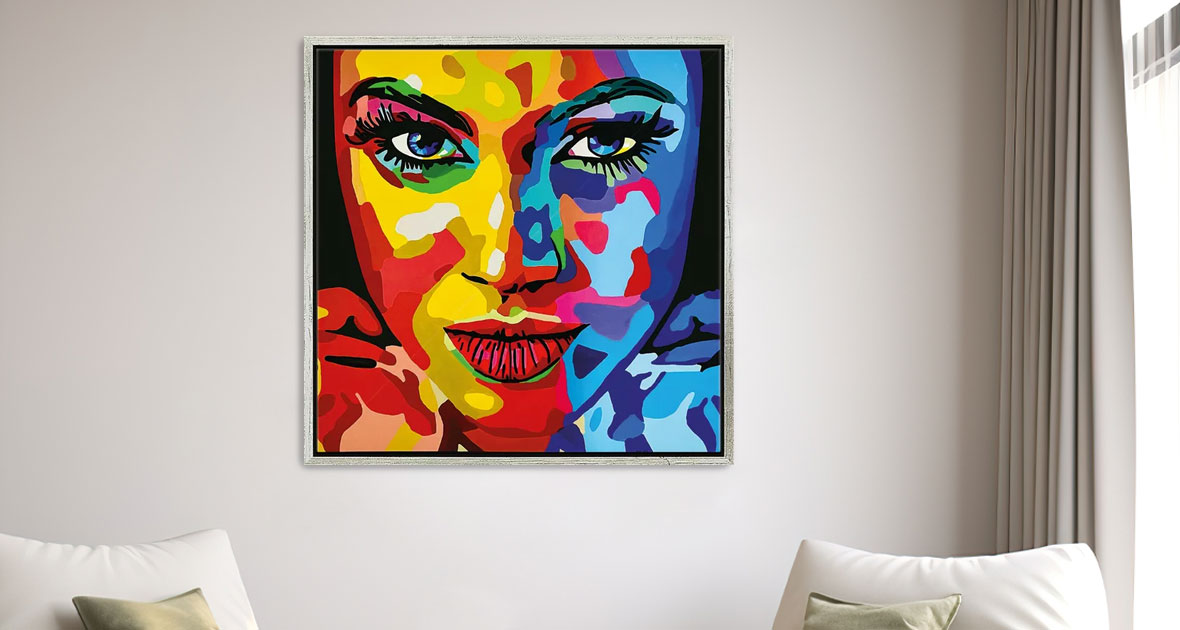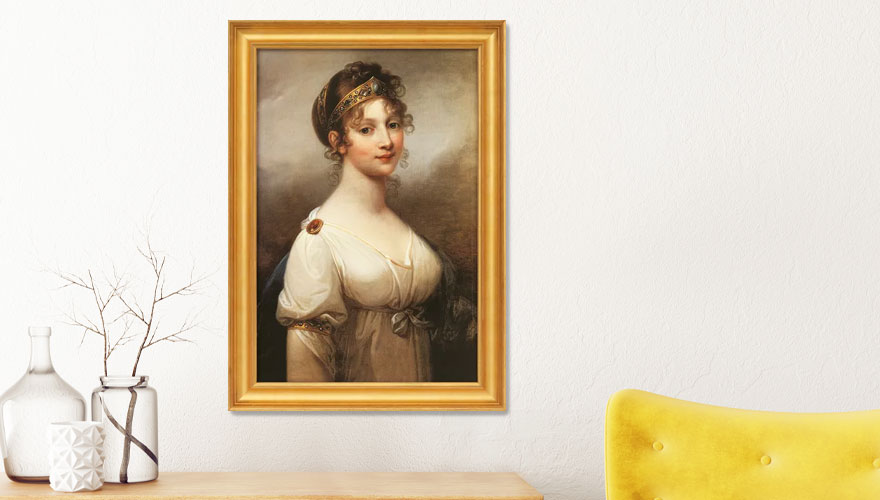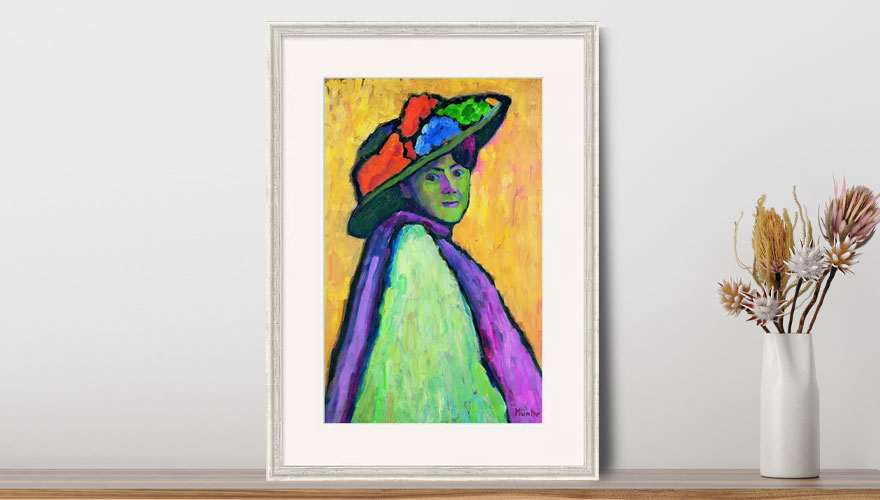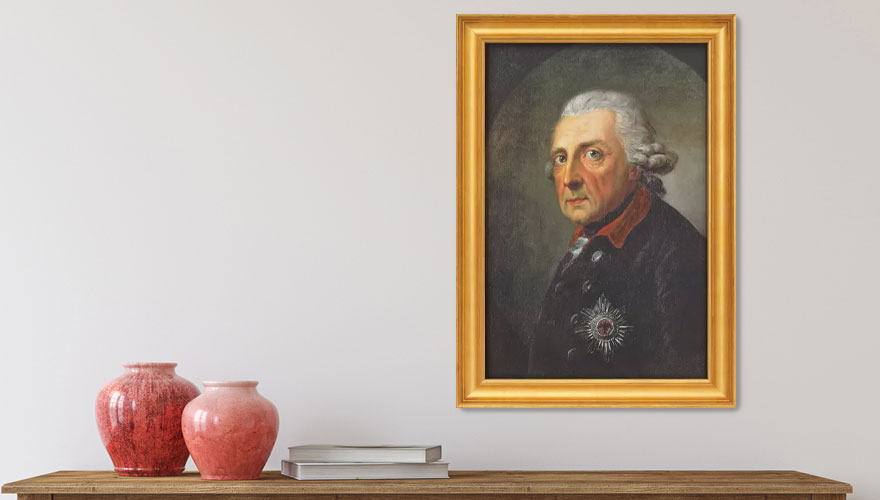
Portrait Painting: The Human Being at the Centre
Depictions of people are among the oldest motifs in painting. The origins of this genre date back to ancient times. Portrait painting has endured across many epochs and still holds a prominent place in contemporary art. Many artists have explored this popular yet challenging pictorial subject throughout their careers.
The art of portrait painting lies in capturing not only the physical appearance but also the essence and character of the individuals being portrayed. Over the centuries, many different variations of portrait art have emerged. These differ, among other things, in terms of the status and number of people depicted, the detail of the picture as well as the posture or angle of view of the models. Additionally, the degree of realism in the depictions has evolved with the various art movements throughout history.

Which Individuals Are Shown in Portrait Painting?
Typically, portraits are created of real persons or perceived real individuals. However, the group of people depicted in these works of art has evolved over the epochs. Whether a person was immortalised in a portrait depended largely on their reputation and societal status. For instance, during the Roman Empire and Ancient Egypt, portraits were primarily made for deities and rulers. Representatives of the clergy were also granted this honour. Additionally, merchants and traders who could afford it also had portraits made. However, the common population was generally excluded as subjects for portraits. In most cases, portraits were commissioned works that served as symbols of authority or reminders of great personalities' achievements.
It was not until 19th-century portrait painting that the exclusive privilege of social elites to be depicted in paintings started to fade. During the Romantic period, artists began to depict common people like farmers, housekeepers, or gardeners at work. This trend solidified in the following decades, and by the 20th century, nearly all societal strata were represented in portrait painting. A prime example is the Pop Art movement, where portraits of well-known figures such as politicians, musicians, or actors took centre stage.
Self-Portraits as a Special Form in Portrait Art
In self-portraits, the artists make themselves the subjects of their work. Starting from the 15th century, artists like Leonardo da Vinci, Albrecht Dürer, and Rembrandt began creating self-portraits. These were seen as expressions of their growing self-confidence and increasing societal status. However, they also served as a practice and experimentation field. Artists from all subsequent epochs, such as Vincent van Gogh, Pierre-Auguste Renoir, and Paula Modersohn-Becker, picked up this idea. Mexican painter Frida Kahlo, for example, offered a straightforward explanation for her motivation to create self-portraits: she painted herself because she was often alone and knew herself best.
Portraits in Painting: Tronies
The genre of "tronies" is somewhat distinct from regular portraits. Tronies also depict people, but these are typically not real individuals. Tronies are often used to practice specific facial studies or to exemplify a general type or certain character traits.
The Genre of Portrait Painting Has Many Variations
The term "portrait" does not only include straightforward front-facing depictions of faces. Rather, the genre is divided into many sub-categories. The most obvious distinguishing feature is the number of individuals shown. In many portraits, only one single person forms the centre of the picture. Alongside individual portraits, there are double portraits, often portraying siblings, or couples, as well as group portraits, like those of entire families.
Further sub-groups of portraits are categorised by the respective detail of the picture or how much of the model's body is shown in the picture. For instance, a "headshot" includes the entire head down to the neck, while a "bust" includes the upper half of the torso. "Three-quarter length" portraits show the person from head to thigh, while "full-length" portraits show the whole body.
Differences also exist in the subject's pose or the viewer's perspective. In a "full face", the model gazes directly at the viewer. In a "profile view", the face is shown from the side, while "half-profile" and "three-quarter view" describe other angles at which the model's face is turned towards the viewer.

Portraits – An Image of People?
In a large part of portrait works, the artists attempted to depict the models as faithfully as possible. However, it should not be assumed that there is a one-to-one correspondence between the model's proportions and the portrayal in the artwork. A realistic portrayal can be doubted for several reasons:
- Portraits often show only general types: Early portraits, such as those known from antiquity, usually show only a few individual characteristics of the individuals depicted. During that time, it was customary to depict deities or rulers according to general standards. Personal features were, at best, indicated by weapons, crowns, or other items symbolising societal status.
- Portrait painting idealises and beautifies: Many portraits were commissioned works by influential or wealthy individuals. These people often pursued strategic goals through their portraits and attached importance to appearing as imposing and advantageous as possible. To this end, they exerted a direct influence on the painters and controlled the manner of their portrayal.
- The view of the artist is not objective: The artist's perspective and the way they bring the person to the canvas can be subjective. The artist's situation or their relationship with the model can be reflected in the picture. The writer Oscar Wilde even assumed that a portrait reveals more about the painter than the subject: "It is rather the painter who, on the coloured canvas, reveals themselves."
- The style may not require it: By the early 20th century, especially with the advent of Expressionism, the notion of portraits needing to be realistic had faded. Expressionists did not aim for a natural or flattering depiction of individuals. Instead, they wanted to look beyond the façade and provide insight into the soul and character of the subjects. Thus, artists such as Gabriele Münter, Alexej von Jawlensky, Egon Schiele and Oskar Kokoschka created abstracting, unsparing and sometimes unflattering portraits.

Famous Portraits in Art History
Some of the most famous and valuable paintings in history are portraits. Two works by an artist from the Renaissance era belong to the most significant portraits of all time. Without a doubt, Leonardo da Vinci's "Mona Lisa" is the quintessential portrait, recognised worldwide. Another work by da Vinci that has garnered significant attention is "Salvator Mundi", an oil painting from around 1500 that depicts Jesus Christ which was auctioned for 450 million US dollars in 2017.
In the 17th century, the popularity of portrait painting continued to rise. The Netherlands, in particular, became home to many portrait painters, including Jan Vermeer van Delft. In 1665, he created the legendary "Girl with a Pearl Earring", which continues to captivate art enthusiasts today.
The 18th century produced several impressive and still-famous portraits of kings. Notable examples include portraits of the French King Louis XIV by Hyacinthe Rigaud and a painting of Frederick II by Anton Graff.
In the 19th century, Impressionism revolutionised portrait painting. While this epoch mainly focused on landscape paintings, it also produced a well-known portrait: Vincent van Gogh's "Self-Portrait with Straw Hat" from 1887.
The 20th century, with its diversity of styles, saw multiple iconic portraits emerge. Picasso's "Les Demoiselles d'Avignon" from 1907 is considered one of the pioneering works of Cubism. Gustav Klimt created one of the most famous paintings of all time with "Adele Bloch-Bauer I" in the early 20th century.
Even in the Pop Art movement, depictions of people remained a significant theme. Andy Warhol, for example, created based on a photograph, his world-renowned silkscreen series of Marilyn Monroe in 1967. Many other interpretations of the genre followed, such as Robert Longo's striking black-and-white portraits and Gerhard Richter's unmistakable blurred effects. Portrait painting remains highly popular among both artists and audiences to this day.
